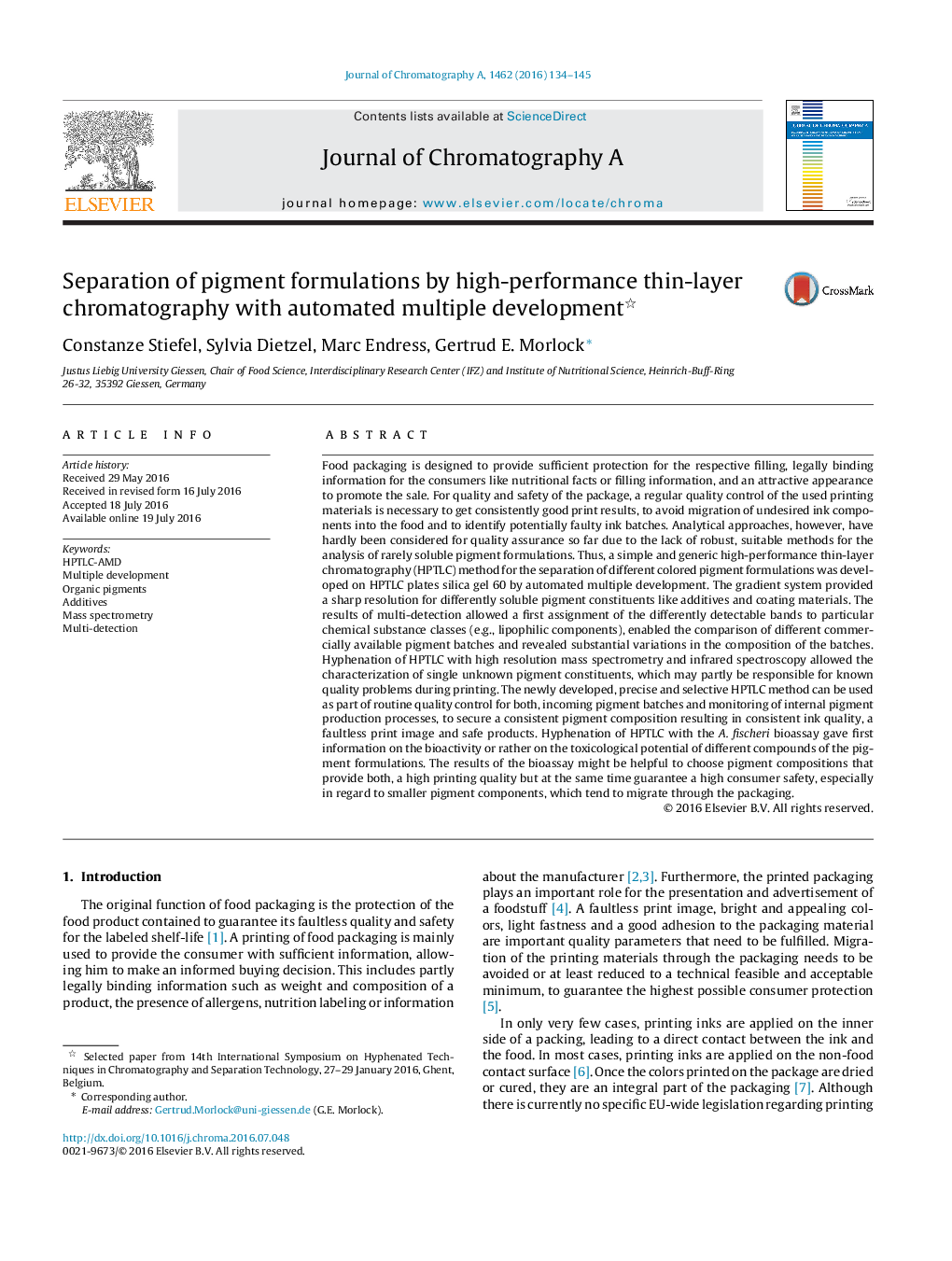| کد مقاله | کد نشریه | سال انتشار | مقاله انگلیسی | نسخه تمام متن |
|---|---|---|---|---|
| 1198628 | 1493464 | 2016 | 12 صفحه PDF | دانلود رایگان |
• Development of a generic HPTLC method for 18 different C.I. pigments and 8 additives.
• Assignment of different pigment classes and structurally similar pigment formulations.
• Profiling of different pigment batches by HPTLC multi-detection.
• Hyphenation with MS or FTIR for further characterization of selected substances.
• Hyphenation with the A. fischeri bioassay for information on toxicological potential.
Food packaging is designed to provide sufficient protection for the respective filling, legally binding information for the consumers like nutritional facts or filling information, and an attractive appearance to promote the sale. For quality and safety of the package, a regular quality control of the used printing materials is necessary to get consistently good print results, to avoid migration of undesired ink components into the food and to identify potentially faulty ink batches. Analytical approaches, however, have hardly been considered for quality assurance so far due to the lack of robust, suitable methods for the analysis of rarely soluble pigment formulations. Thus, a simple and generic high-performance thin-layer chromatography (HPTLC) method for the separation of different colored pigment formulations was developed on HPTLC plates silica gel 60 by automated multiple development. The gradient system provided a sharp resolution for differently soluble pigment constituents like additives and coating materials. The results of multi-detection allowed a first assignment of the differently detectable bands to particular chemical substance classes (e.g., lipophilic components), enabled the comparison of different commercially available pigment batches and revealed substantial variations in the composition of the batches. Hyphenation of HPTLC with high resolution mass spectrometry and infrared spectroscopy allowed the characterization of single unknown pigment constituents, which may partly be responsible for known quality problems during printing. The newly developed, precise and selective HPTLC method can be used as part of routine quality control for both, incoming pigment batches and monitoring of internal pigment production processes, to secure a consistent pigment composition resulting in consistent ink quality, a faultless print image and safe products. Hyphenation of HPTLC with the A. fischeri bioassay gave first information on the bioactivity or rather on the toxicological potential of different compounds of the pigment formulations. The results of the bioassay might be helpful to choose pigment compositions that provide both, a high printing quality but at the same time guarantee a high consumer safety, especially in regard to smaller pigment components, which tend to migrate through the packaging.
Journal: Journal of Chromatography A - Volume 1462, 2 September 2016, Pages 134–145
